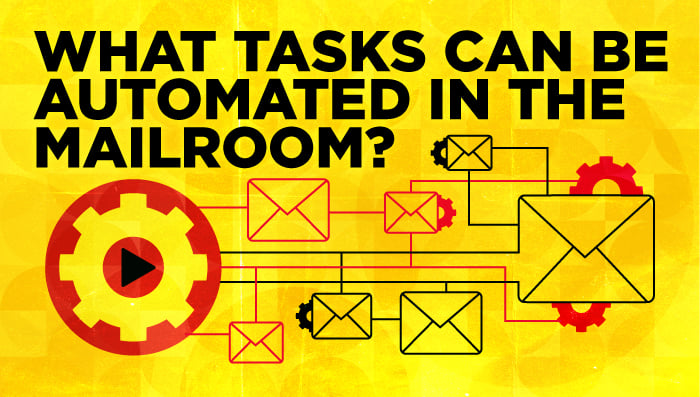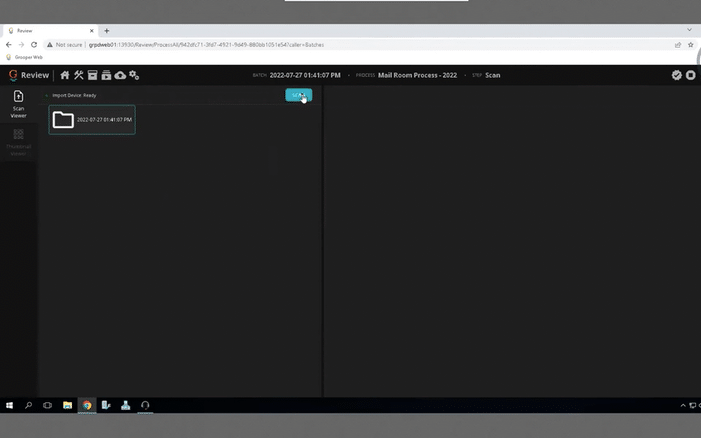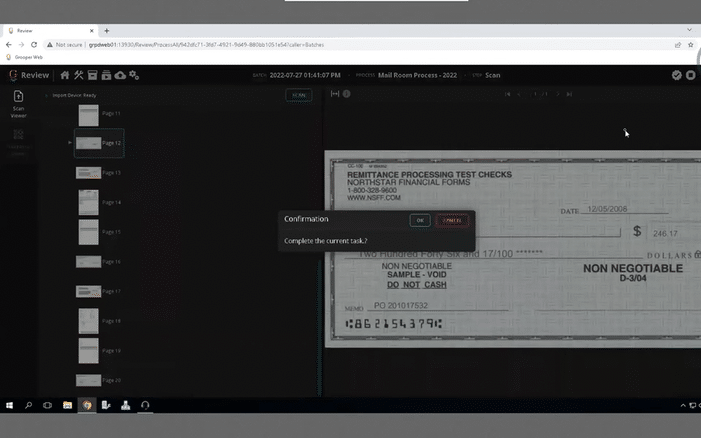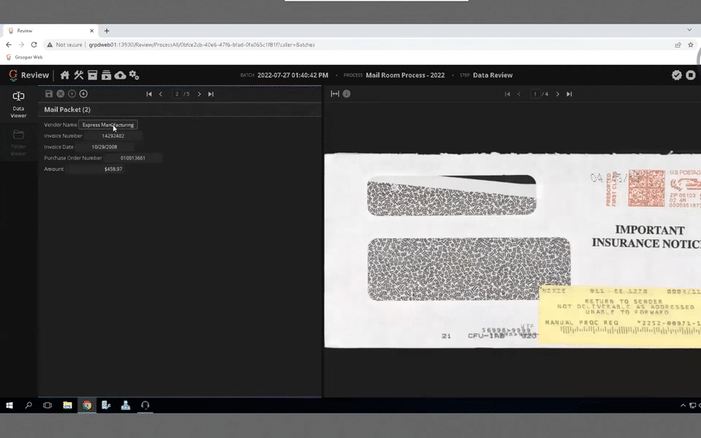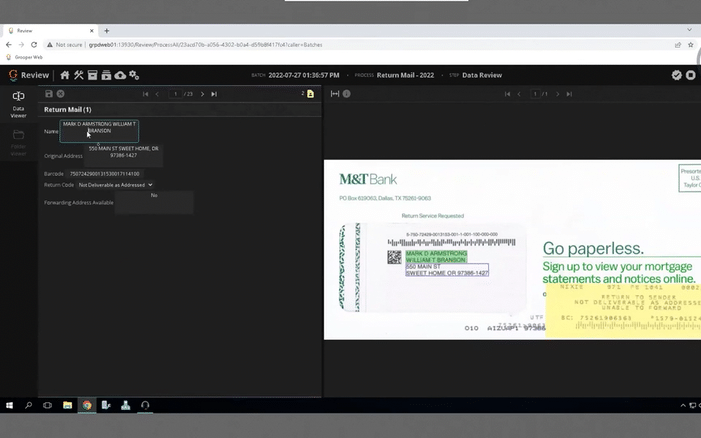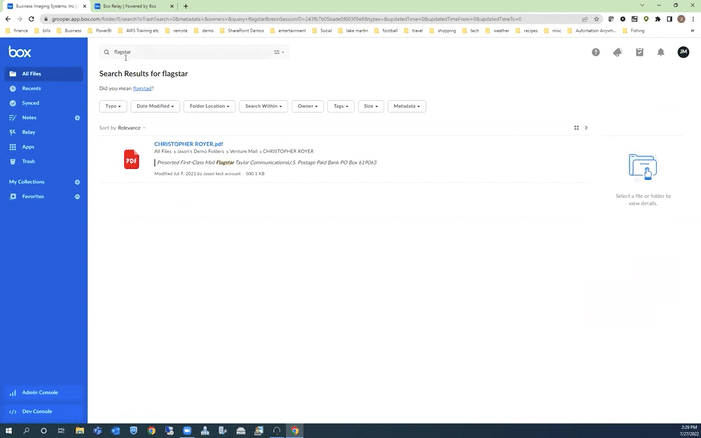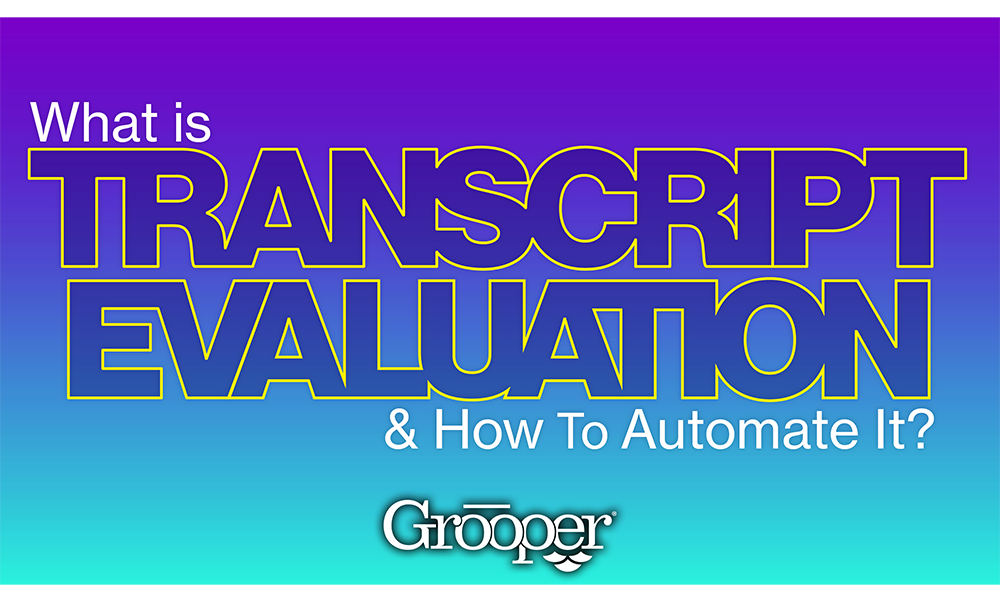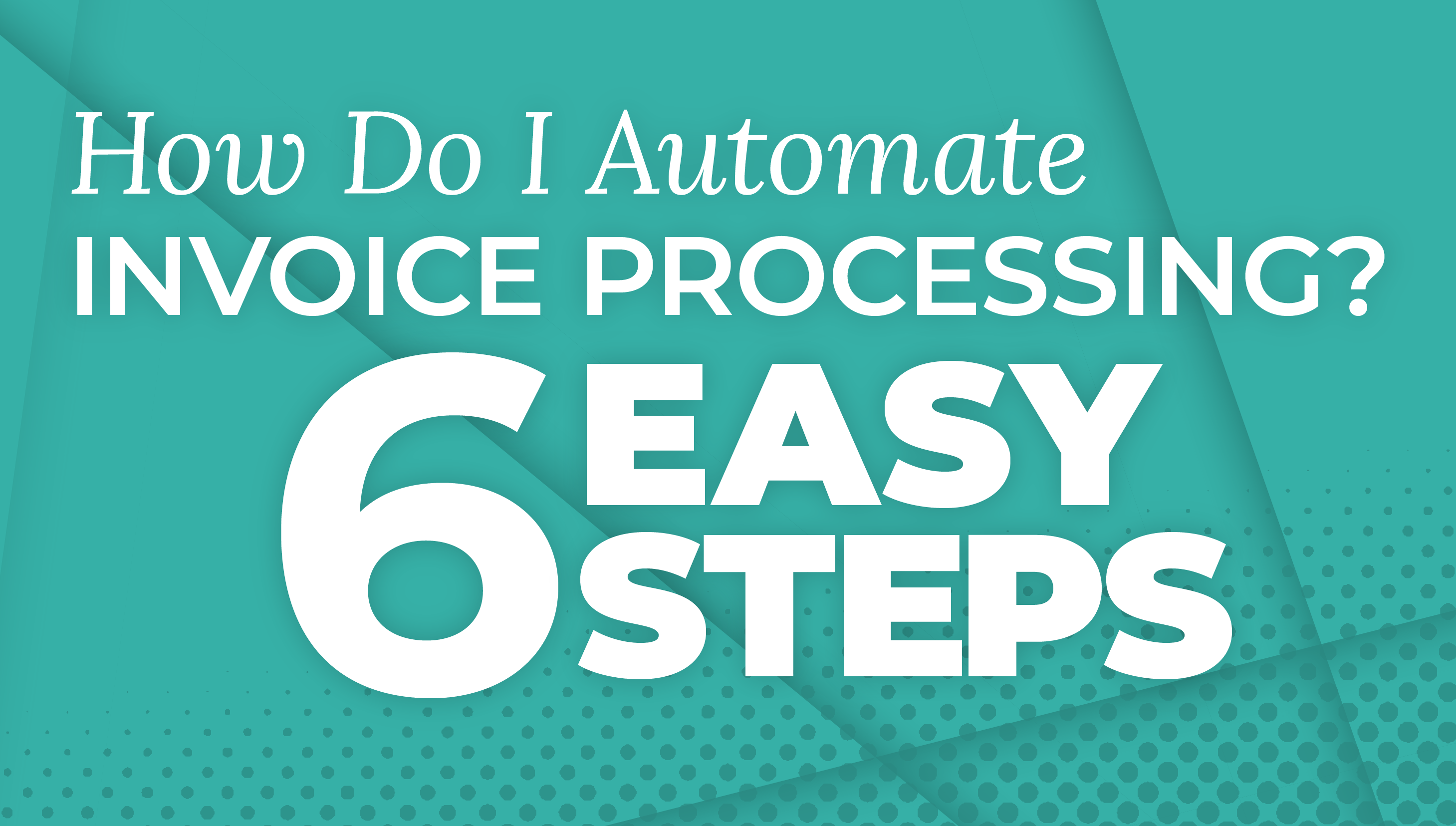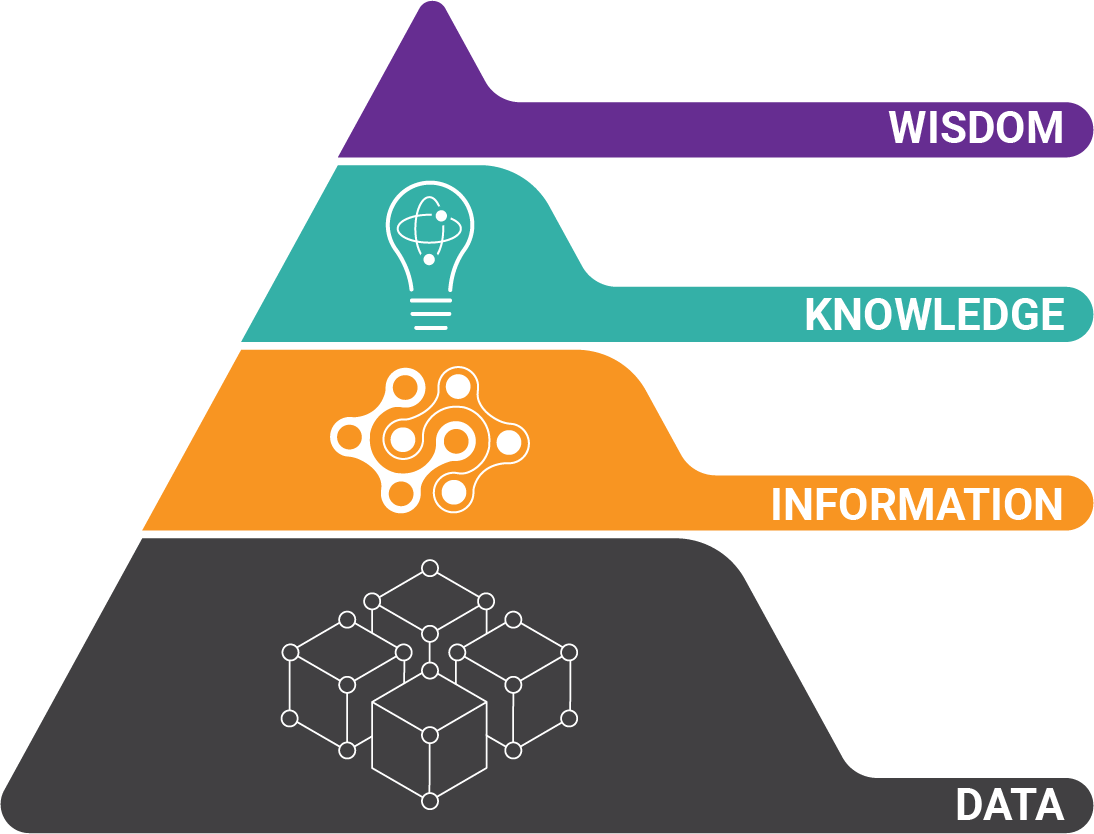There are many different types of workflows in mailroom operations. Every organization has different mailroom needs, different processes, and document types to process depending on your industry or nature of your business.
But despite these differences, nearly every organization has this one similarity: they all depend on low-level, manual human work in the mailroom.
Using AI and intelligent document processing, we will show you how simple it is to automate many different manual mailroom processes...
What Tasks Can Be Automated in the Mailroom?
- Mail identification and sorting
- Getting information off physical mail and into data management systems
- Processing returned mail
- Finding archived mail
- Mail routing
Mail Identification and Sorting
This process begins when your mailroom staff opens the envelopes and places documents in a scanner with a document feeder.
(Scanning the envelope is optional and not required. It makes sense for the way that some organizations work, but not others. For example, it may be important for some to save the envelope so they can point back to a postal stamp date or a "Nixie.")
If you do scan the envelope, you can also use mailroom automation software to identify the beginning of a new document. The software, such as Grooper, uses AI to detect a postal barcode on an envelope, which means this is a new document from the previous page.
Here is the mail being scanned into mailroom automation software:
Today's mail is now in the mailroom automation software. Then, with one push of a button, the software:
- Scanned in the mail
- Digitized the mail documents
- Recognized what kind of documents they are
- Automatically separated them into different document groups
- Collected all data that you want off of the documents
Click the video to enlarge:
Based on the way that you train the software, it will automatically know what is on a certain kind of document and will classify the document as such.
Get Our Cheat Sheet to Mailroom Automation!
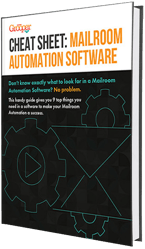 Interested in mailroom automation, but not sure which software is the best? We got you covered.
Interested in mailroom automation, but not sure which software is the best? We got you covered.
This cheat sheet gives you the 9 important things to look for in the best mailroom automation software that will make your mailroom thrive as a supercharged data onramp! Get the cheat sheet:
Getting Information off Physical Mail and Into Data Management Systems
In this example, the digital mailroom solution used OCR to extract:
- Vendor Name
- Invoice Number
- Invoice Date
- Purchase Order Number
- Amount
(Much more data can be collected from documents than in this example. This example is just showing you how to collect a minimal amount of information in order to route this to the correct person.) Click to enlarge:
A simple click will show you where the software found that data on the document.
This information can then be moved into your ECM system or other data repositories. In addition, this one document can be broken up into several pieces for routing.
For instance, the PO could be routed to someone for approval, the invoice can be routed to an AP clerk, and the check can be routed to another person for check processing.
Automated Processing of Returned Mail
Did you know that the task of processing returned mail can also be automated? In this case, you don't need to open the envelopes, because all the data that's needed for processing is what's on the front of the envelope. That yellow sticker on the envelop is called a "Nixie."
With the push of a button, the software performs the same processes as before, such as scan, recognize / OCR, and separate.
The software collected the sender's name, original address, barcode, and return code, and a 'yes' or 'no' if a forwarding address was available:
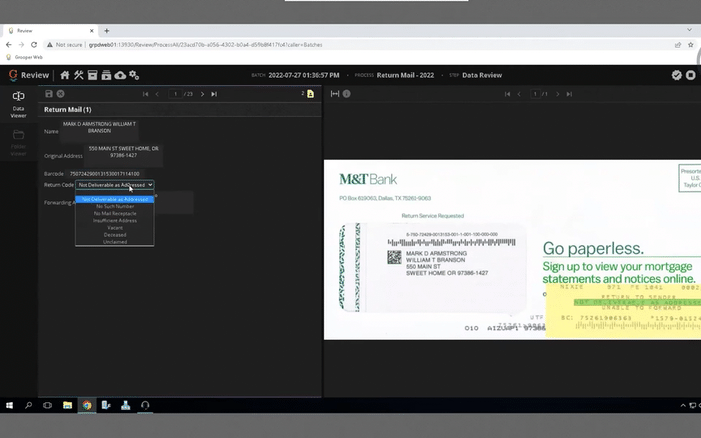
Finding Pre-Processed and Archived Mail
When you need to find pre-processed or archived mail, a simple search for something like a company name can find the right piece — even when the company name was not in the data originally collected!
This company name (Flagstar) was not originally collected, and is part of a logo, but the AI software still found the right piece of mail. There are not very many solutions that can detect and convert data like Grooper can.
Grooper OCR technology can read odd fonts, machine print, handwriting, barcodes, checkboxes, and OMR. These are things that other technologies struggle with or are totally unable to recognize.
All of this data was automatically collected by the software without any human manual data entry needed.
Automated Mail Routing
Using a simple workflow designer like the one in Box, you can create a workflow based on when a new mail document comes in, which begins a task or conditional procedures.
For instance, the mailroom software detects a mailed invoice that is over $10,000. It then gets routed to a specific VP. But if the invoice is under $10,000 it is routed to a specific manager.
Or automated tasks can be based off other factors, like zip codes or area codes. So if an employee is in charge of certain set of 10 zip codes, and a piece of mail comes in from that zip code, those documents will be routed to that person.
Unattended activates not needing human action can also be created.
About the Author: Brad Blood
Senior Marketing Specialist at BIS
